Opinion & Analysis
How power helps your golf game (and it’s not how you think)
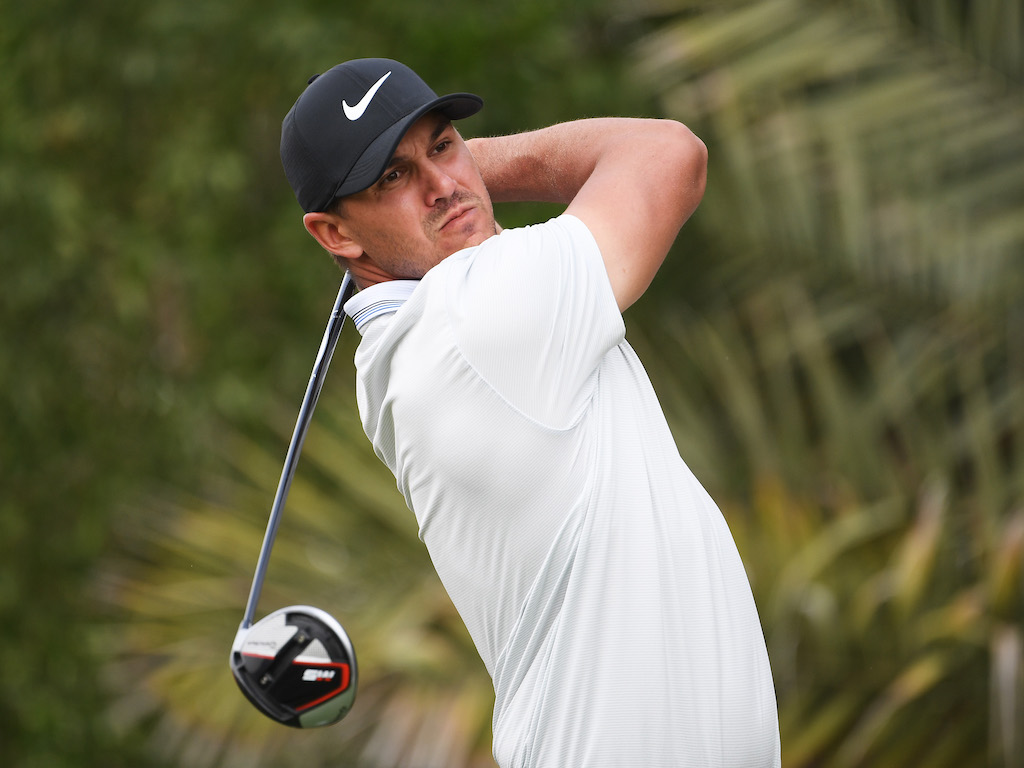
Editor’s Note: This is an excerpt from Rich Hunt’s 2018 Pro Golf Synopsis, which can be purchased here for $10.99. Stylistic changes were made to the story for online publication.
As a statistical analyst and researcher for Tour pros, caddies and instructors, the most common question I receive is with regards to the importance of power in the game. There is still a strong contingent of golfers that believe that driving distance is the least important metric in the game of golf. I am emphatic when I say that is incorrect.
Research conducted by myself and others has shown that driving distance is one of the more important metrics in the game. Not only have I found this to be the case when studying Tour players, but it applies to the average amateur as well.
In 2013, some friends of mine and I did a study using Trackman and the USGA GHIN to see if there was a correlation between a golfer’s club head speed and their handicap index. There were 137 subjects, ages 15-57 years old that had to have a USGA handicap and have recorded at least 20 scores in the GHIN within the last 12 months. The subjects ranged from PGA Tour players to 25 handicaps.
The findings were than the correlation very strong at +0.91 with a standard deviation of 4.5 mph. Correlation is the a mathematical methodology to determine the strength of a relationship between two variables. The closer the correlation is to 1.0, the stronger the relationship. Therefore, a correlation of +0.91 shows a very strong correlation and it is strong enough to project club head speed based on the golfer’s handicap.
Here is the regression formula that projects the club head speed based on the golfer’s USGA handicap
(Handicap *-1.38899923605806) + 106.486783804431 = Projected Club Head Speed
Here is a table showing the projected club speed based on USGA handicap (note that + handicaps are better-than-scratch golfers)
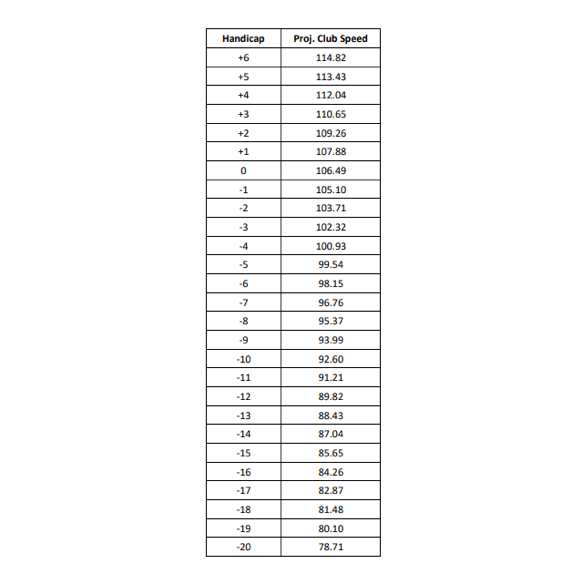
There has been some confusion from readers in interpreting the data. Understand that this is projecting the club speed and it is not definitive. The projected club speed numbers do not represent the entire population.
The data projects that 68 percent of the population will fall within 1-standard deviation from the projected values. That means that the data projects that 68 percent of the population will fall within +/- 4.5 mph from the projected numbers listed above. 95 percent of the population will fall within 2-standard deviations (+/- 9 mph) of the projected numbers listed above. And 99.7 percent of the population will fall within 3 standard deviations (+/- 13.5 mph) of the projected numbers listed above.
When I posted this table on Twitter, many readers would proclaim that they ‘underachieved’ because their club speed was much higher than the projected numbers based on their handicap. For example, a player that is a -3 handicap is projected to generate 102.3 mph club speed, but generates (or at least claims to) generate 113 mph club speed.
That player has not ‘underachieved’ nor does it mean that the regression analysis is invalid based on their anecdotal evidence. It just means that that they fall outside 95 percent of the projected population of -3 handicaps.
The key to understanding the table and regression analysis is that the study shows that there is a relationship between the two variables, not a perfect 1:1 relationship. And thus, we can use that relationship not only for more accurate projections, but to examine why that relationship exists and what can be done for golfers to use that to their advantage to improve their scores.
For example, a friend of mine is roughly a 20 handicap, but I have clocked him at 124 mph club speed. He never had much in the way of formal instruction and plays about once a month. But he is a 6’6” former college basketball player and competitive softball player. He knows how to do one thing incredibly well in golf; generate speed. It does not mean that speed (power) is any less important. It just means that he is outside 99.7% percent of the population and is an extreme anomaly.
***
One issue with the regression analysis that I posted is that it does not determine why the relationship exists. Do lower handicaps tend to have higher club head speeds because they are utilizing better technique that allows them to generate more speed or does the distance gained actually help the golfer shoot a lower score?
A few years ago, my friend Mark Sweeney from AimPoint Golf found another strong correlation involving distance. This time the correlation was with the length of the average birdie putt for Tour players. The chart looks something like this:
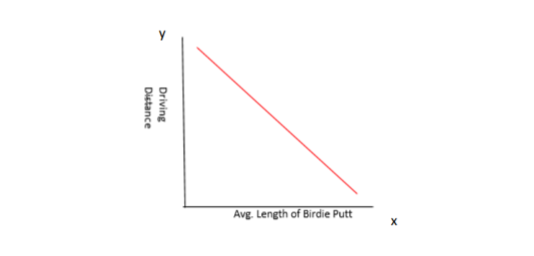
Essentially, the further the player hits the ball off the tee, the more likely their average birdie putt will be shorter in length. Thus, a player that is a lesser skilled putter can sink more putts than superior skilled putters if they are longer off the tee because they are having easier putts to make. I call this The Power to Putting Principle.
For example, Rory McIlroy is one of the longest hitters on Tour and has struggled with the putter in recent years. Brian Gay is one of the shortest hitters on Tour and one of the better putters. Rory may sink more putts in a round because he may have an average birdie putt length of 15-feet while Gay’s average birdie putt length may be at 25-feet. On birdie putts, McIlroy is giving himself putts that have a 22 percent make probability on average compared to Gay having putts with a 10 percent make probability on average. Thus, while Gay is a far superior putter he will not likely make as many putts as McIlroy because Gay’s putts are much more difficult to make.
This is where power provides the greatest advantage to golfers; on the putting greens.
Is there any advantage to being short, but accurate off the tee?
Well, note that the Sweeney study is about the length of the average birdie putt. When a long ball hitter misses the green in regulation, they are more likely to have a longer and more difficult scrambling opportunity. This is because of the times that the bomber misses the fairway by a wide margin and ends up in the trees and has to punch out or they end up in a penalty area.
This is why I advise Tour players that analytics if golf is not a rigid ‘one size fits all’ system. Not only should a golfer accurately determine their strengths and weaknesses and figure out how to utilize them to play the best golf possible, but distance plays a major role in what areas of the game a player needs to focus on. Brian Gay should not try to play Bubba Watson’s game and Bubba Watson should not try to play Jordan Spieth’s game all because their differing lengths off the tee creates different advantages they must exploit and different weaknesses that they must account for.
Applying this to your game
As I mentioned earlier, the Power to Putting Principle states that longer hitters have an advantage on the greens because they are more likely to have short length birdie putts on average than shorter hitters. But shorter hitters have an advantage when the green in regulation is missed.
Thus, shorter hitters need to be more skilled putters to compete with the longer hitters. And longer hitters need to be more skilled with their abilities around the greens in order to convert those up-and-downs like the shorter, but more accurate golfer.
Therefore the best short hitting golfers in the world over the years (Zach Johnson, Brian Gay, Jim Furyk, etc.) have been very good putters. They must be great putters to make up for them having more difficult putts on average than the longer hitters. That is how some of the best long hitters in the world tend to still play great golf despite putting poorly (i.e. Dustin Johnson, Rory McIlroy, Bubba Watson).
But we do see that the long hitters tend to play their best golf when their short game around the green and/or their putting improves.
The misconception from the press and fans becomes that because a bomber improved so much in their putting and/or short game around the green that is what really matters most in golf. The reality is completely different from perception though. They are great players and better than the rest of the world because of their ballstriking and their power. It’s just that when they improve their putting and short game around the green, now they become the very best of the best.
Bubba Watson isn’t ranked #17 in the world due to his short game around the green (ranked 174th last season) and putting (ranked 108th last season). However, if he starts to dominate the Tour and get into the top-10 it is very likely that he will have improved upon those areas and essentially have little in the way of flaws in his game.
How does this apply to the 10-handicap golfer?
The projected club speed of a 10-handicap golfer using my regression analysis is 92.6 mph. If a golfer is a legitimate 10-handicap golfer and generates 85 mph they are likely more accurate off the tee and a better putter than the other 10-handicap golfer that generates 93 mph of speed.
With any golfer, an increase in club speed is likely to improve their handicap. However, if the golfer just wants to compete with other 10-handicaps without working on their golf swing, it is very important that he hit the ball more accurately than his competitors and that he will need to be more skilled with the putter.
If the golfer is a 10-handicap and generates 100 mph of club speed with the driver, they most likely are less accurate off the tee and worse putters than their fellow 10-handicap golfers. However, the key here is that the 100-mph golfer has more options than the 85-mph golfer. The 100-mph golfer can beat out his fellow 10-handicappers by hitting the ball more accurately or by improving their short game around the green to make up for having more difficult scramble opportunities or they can improve their putting.
In a previous example, I showed why Brian Gay has to be more skilled of a putter to sink more putts than Bubba Watson. Gay hits it shorter and has longer (and thus more difficult) putts to make than Watson. But, what if Bubba was equally as skilled or more skilled than Gay with the putter?
You would have an equally skilled or more skilled putter that is putting from more makeable distances. This is why long hitters are so dangerous. If they can keep the ball out of trouble and get four good days with the putter, they are going to contend. And the same applies with amateurs.
Developing young golfers
I am frequently asked by coaches of junior golfers and colleges that have Professional Golf Management programs about what their golfers should focus on developing in their golf game.
My answer is ‘Power and Putting.’
It may sound like a cliché with all the discussion with regards to how the Tour is becoming about who can hit it the longest, but my opinion is based on the math and the historical data with regards to the subject.
If hitting it further is likely to leave you with more makeable birdie putts and the golfer is a great putter, then it is a scenario where a great putter has easier putts to make and that equates to the lowest scores.
Yes, every shot does count. Long approach shots are certainly important and the same with mid-length approach shots. The same goes for having a respectable amount of accuracy and precision. And you do lose strokes if your short game around the green stinks to high heaven. But most players that hit it long have a high level of competence as a golfer. And those that can putt well along with it are at an enormous advantage.
And if I were to just name players that hit the ball long (175+ mph ball speed) and putted great for a significant length of time with no regards to the rest of the game, the players I come up with are:
- Tiger Woods
- Phil Mickelson
- Brooks Koepka
- Jason Day
- Rickie Fowler
- Paul Casey
- Jimmy Walker
And those are the players that I could measure with ShotLink. While it is speculation, players off the top of my head that were both very long and great putters pre-ShotLink were:
- Bobby Jones
- Arnold Palmer
- Jack Nicklaus
- Tom Watson
- Seve Ballesteros
There was more to their games than hitting it long and putting well. But, the math behind hitting it long and putting well is why it was not a coincidence that they were also some of the greatest players to have ever played the game.
- LIKE141
- LEGIT23
- WOW15
- LOL1
- IDHT2
- FLOP2
- OB0
- SHANK22
19th Hole
Vincenzi’s LIV Golf Singapore betting preview: Course specialist ready to thrive once again

After another strong showing in Australia, LIV Golf will head to Sentosa Golf Club in Singapore looking to build off of what was undoubtedly their best event to date.
Sentosa Golf Club sits on the southern tip of Singapore and is one of the most beautiful courses in the world. The course is more than just incredible scenically; it was also rated 55th in Golf Digest’s top-100 courses in 2022-2023 and has been consistently regarded as one of the best courses in Asia. Prior to being part of the LIV rotation, the course hosted the Singapore Open every year since 2005.
Sentosa Golf Club is a par 71 measuring 7,406 yards. The course will require precise ball striking and some length off the tee. It’s possible to go low due to the pristine conditions, but there are also plenty of hazards and difficult spots on the course that can bring double bogey into play in a hurry. The Bermudagrass greens are perfectly manicured, and the course has spent millions on the sub-air system to keep the greens rolling fast. I spoke to Asian Tour player, Travis Smyth, who described the greens as “the best [he’s] ever played.”
Davis Love III, who competed in a Singapore Open in 2019, also gushed over the condition of the golf course.
“I love the greens. They are fabulous,” the 21-time PGA Tour winner said.
Love III also spoke about other aspects of the golf course.
“The greens are great; the fairways are perfect. It is a wonderful course, and it’s tricky off the tee.”
“It’s a long golf course, and you get some long iron shots. It takes somebody hitting it great to hit every green even though they are big.”
As Love III said, the course can be difficult off the tee due to the length of the course and the trouble looming around every corner. It will take a terrific ball striking week to win at Sentosa Golf Club.
In his pre-tournament press conference last season, Phil Mickelson echoed many of the same sentiments.
“To play Sentosa effectively, you’re going to have a lot of shots from 160 to 210, a lot of full 6-, 7-, 8-iron shots, and you need to hit those really well and you need to drive the ball well.”
Golfers who excel from tee to green and can dial in their longer irons will have a massive advantage this week.
Stat Leaders at LIV Golf Adelaide:
Fairways Hit
1.) Louis Oosthuizen
2.) Anirban Lahiri
3.) Jon Rahm
4.) Brendan Steele
5.) Cameron Tringale
Greens in Regulation
1.) Brooks Koepka
2.) Brendan Steele
3.) Dean Burmester
4.) Cameron Tringale
5.) Anirban Lahiri
Birdies Made
1.) Brendan Steele
2.) Dean Burmester
3.) Thomas Pieters
4.) Patrick Reed
5.) Carlos Ortiz
LIV Golf Individual Standings:
1.) Joaquin Niemann
2.) Jon Rahm
3.) Dean Burmester
4.) Louis Oosthuizen
5.) Abraham Ancer
LIV Golf Team Standings:
1.) Crushers
2.) Legion XIII
3.) Torque
4.) Stinger GC
5.) Ripper GC
LIV Golf Singapore Picks
Sergio Garcia +3000 (DraftKings)
Sergio Garcia is no stranger to Sentosa Golf Club. The Spaniard won the Singapore Open in 2018 by five strokes and lost in a playoff at LIV Singapore last year to scorching hot Talor Gooch. Looking at the course setup, it’s no surprise that a player like Sergio has played incredible golf here. He’s long off the tee and is one of the better long iron players in the world when he’s in form. Garcia is also statistically a much better putter on Bermudagrass than he is on other putting surfaces. He’s putt extremely well on Sentosa’s incredibly pure green complexes.
This season, Garcia has two runner-up finishes, both of them being playoff losses. Both El Camaleon and Doral are courses he’s had success at in his career. The Spaniard is a player who plays well at his tracks, and Sentosa is one of them. I believe Sergio will get himself in the mix this week. Hopefully the third time is a charm in Singapore.
Paul Casey +3300 (FanDuel)
Paul Casey is in the midst of one of his best seasons in the five years or so. The results recently have been up and down, but he’s shown that when he’s on a golf course that suits his game, he’s amongst the contenders.
This season, Casey has finishes of T5 (LIV Las Vegas), T2 (LIV Hong Kong), and a 6th at the Singapore Classic on the DP World Tour. At his best, the Englishman is one of the best long iron players in the world, which makes him a strong fit for Sentosa. Despite being in poor form last season, he was able to fire a Sunday 63, which shows he can low here at the course.
It’s been three years since Casey has won a tournament (Omega Dubai Desert Classic in 2021), but he’s been one of the top players on LIV this season and I think he can get it done at some point this season.
Mito Pereira +5000 (Bet365)
Since Mito Pereira’s unfortunate demise at the 2022 PGA Championship, he’s been extremely inconsistent. However, over the past few months, the Chilean has played well on the International Series as well as his most recent LIV start. Mito finished 8th at LIV Adelaide, which was his best LIV finish this season.
Last year, Pereira finished 5th at LIV Singapore, shooting fantastic rounds of 67-66-66. It makes sense why Mito would like Sentosa, as preeminent ball strikers tend to rise to the challenge of the golf course. He’s a great long iron player who is long and straight off the tee.
Mito has some experience playing in Asia and is one of the most talented players on LIV who’s yet to get in the winner’s circle. I have questions about whether or not he can come through once in contention, but if he gets there, I’m happy to roll the dice.
Andy Ogletree +15000 (DraftKings)
Andy Ogletree is a player I expected to have a strong 2024 but struggled early in his first full season on LIV. After failing to crack the top-25 in any LIV event this year, the former U.S. Amateur champion finally figured things out, finished in a tie for 3rd at LIV Adelaide.
Ogletree should be incredible comfortable playing in Singapore. He won the International Series Qatar last year and finished T3 at the International Series Singapore. The 26-year-old was arguably the best player on the Asian Tour in 2023 and has been fantastic in the continent over the past 18 months.
If Ogletree has indeed found form, he looks to be an amazing value at triple-digit odds.
- LIKE3
- LEGIT3
- WOW1
- LOL2
- IDHT0
- FLOP2
- OB0
- SHANK0
Opinion & Analysis
Ryan: Lessons from the worst golf instructor in America
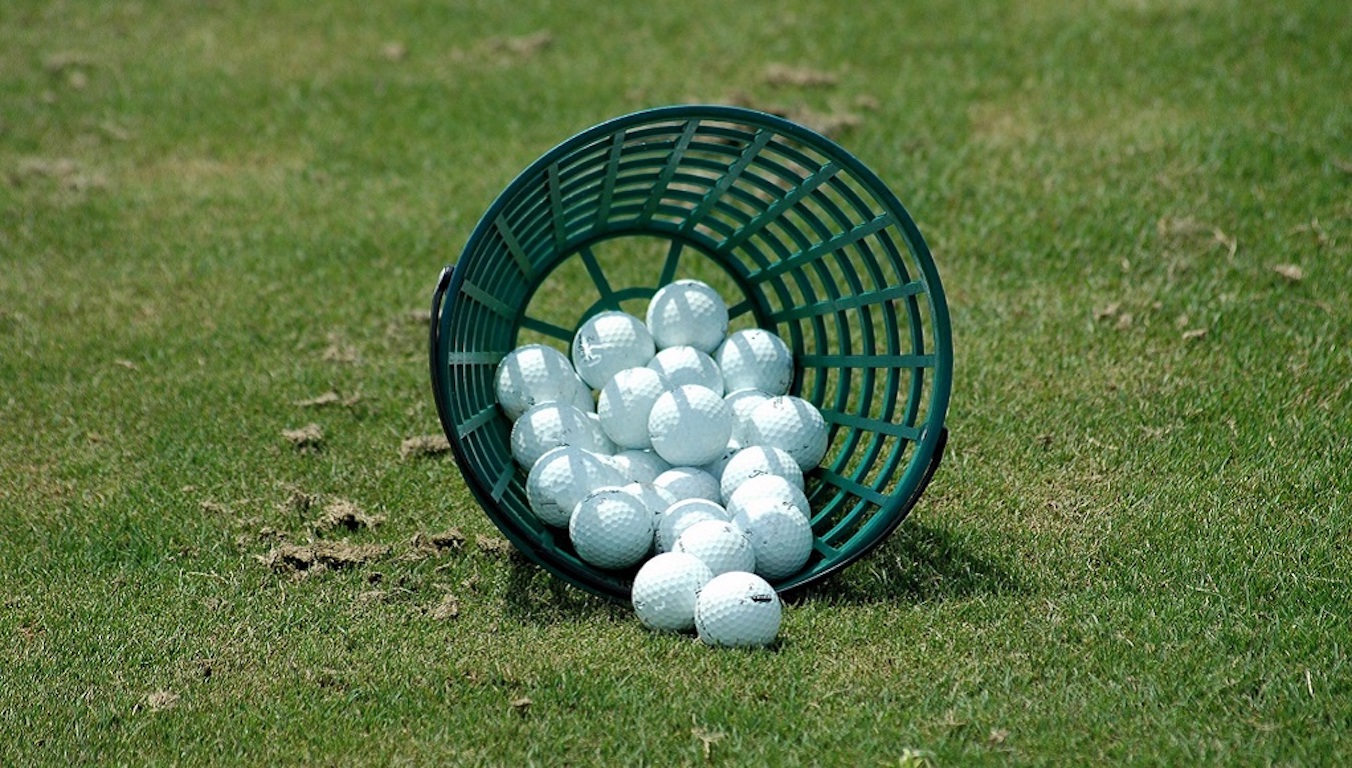
In Tampa, there is a golf course that boasts carts that do not work, a water range, and a group of players none of which have any chance to break 80. The course is overseen by a staff of crusty men who have succeeded at nothing in life but ending up at the worst-run course in America. However, this place is no failure. With several other local courses going out of business — and boasting outstanding greens — the place is booked full.
While I came for the great greens, I stayed to watch our resident instructor; a poor-tempered, method teacher who caters to the hopeless. At first, it was simply hilarious. However, after months of listening and watching, something clicked. I realized I had a front-row seat to the worst golf instructor in America.
Here are some of my key takeaways.
Method Teacher
It is widely accepted that there are three types of golf instructors: system teachers, non-system teachers, and method teachers. Method teachers prescribe the same antidote for each student based on a preamble which teachers can learn in a couple day certification.
Method teaching allows anyone to be certified. This process caters to the lowest caliber instructor, creating the illusion of competency. This empowers these underqualified instructors with the moniker of “certified” to prey on the innocent and uninformed.
The Cult of Stack and Jilt
The Stack and Tilt website proudly boasts, “A golfer swings his hands inward in the backswing as opposed to straight back to 1) create power, similar to a field goal kicker moving his leg in an arc and 2) to promote a swing that is in-to-out, which produces a draw (and eliminates a slice).”
Now, let me tell you something, there is this law of the universe which says “energy can either be created or destroyed,” so either these guys are defying physics or they have no idea what they are taking about. Further, the idea that the first move of the backswing determines impact is conjecture with a splash of utter fantasy.
These are the pontifications of a method — a set of prescriptions applied to everyone with the hope of some success through the placebo effect. It is one thing for a naive student to believe, for a golf instructor to drink and then dispel this Kool-Aid is malpractice.
Fooled by Randomness
In flipping a coin, or even a March Madness bet, there is a 50-50 chance of success. In golf, especially for new players, results are asymmetric. Simply put: Anything can happen. The problem is that when bad instructors work with high handicappers, each and every shot gets its own diagnosis and prescription. Soon the student is overwhelmed.
Now here’s the sinister thing: The overwhelming information is by design. In this case, the coach is not trying to make you better, they are trying to make you reliant on them for information. A quasi Stockholm syndrome of codependency.
Practice
One of the most important scientists of the 20th century was Ivan Pavlov. As you might recall, he found that animals, including humans, could be conditioned into biological responses. In golf, the idea of practice has made millions of hackers salivate that they are one lesson or practice session from “the secret.”
Sunk Cost
The idea for the worst golf instructor is to create control and dependency so that clients ignore the sunk cost of not getting better. Instead, they are held hostage by the idea that they are one lesson or tip away from unlocking their potential.
Cliches
Cliches have the effect of terminating thoughts. However, they are the weapon of choice for this instructor. Add some hyperbole and students actually get no information. As a result, these players couldn’t play golf. When they did, they had no real scheme. With no idea what they are doing, they would descend into a spiral of no idea what to do, bad results, lower confidence, and running back to the lesson tee from more cliches.
The fact is that poor instruction is about conditioning players to become reliant members of your cult. To take away autonomy. To use practice as a form of control. To sell more golf lessons not by making people better but through the guise that without the teacher, the student can never reach their full potential. All under the umbrella of being “certified” (in a 2-day course!) and a melee of cliches.
This of course is not just happening at my muni but is a systemic problem around the country and around the world, the consequences of which are giving people a great reason to stop playing golf. But hey, at least it’s selling a lot of golf balls…
- LIKE18
- LEGIT2
- WOW0
- LOL4
- IDHT1
- FLOP4
- OB1
- SHANK23
19th Hole
Vincenzi’s 2024 Zurich Classic of New Orleans betting preview

The PGA TOUR heads to New Orleans to play the 2023 Zurich Classic of New Orleans. In a welcome change from the usual stroke play, the Zurich Classic is a team event. On Thursday and Saturday, the teams play best ball, and on Friday and Sunday the teams play alternate shot.
TPC Louisiana is a par 72 that measures 7,425 yards. The course features some short par 4s and plenty of water and bunkers, which makes for a lot of exciting risk/reward scenarios for competitors. Pete Dye designed the course in 2004 specifically for the Zurich Classic, although the event didn’t make its debut until 2007 because of Hurricane Katrina.
Coming off of the Masters and a signature event in consecutive weeks, the field this week is a step down, and understandably so. Many of the world’s top players will be using this time to rest after a busy stretch.
However, there are some interesting teams this season with some stars making surprise appearances in the team event. Some notable teams include Patrick Cantlay and Xander Schauffele, Rory McIlroy and Shane Lowry, Collin Morikawa and Kurt Kitayama, Will Zalatoris and Sahith Theegala as well as a few Canadian teams, Nick Taylor and Adam Hadwin and Taylor Pendrith and Corey Conners.
Past Winners at TPC Louisiana
- 2023: Riley/Hardy (-30)
- 2022: Cantlay/Schauffele (-29)
- 2021: Leishman/Smith (-20)
- 2019: Palmer/Rahm (-26)
- 2018: Horschel/Piercy (-22)
- 2017: Blixt/Smith (-27)
2024 Zurich Classic of New Orleans Picks
Tom Hoge/Maverick McNealy +2500 (DraftKings)
Tom Hoge is coming off of a solid T18 finish at the RBC Heritage and finished T13 at last year’s Zurich Classic alongside Harris English.
This season, Hoge is having one of his best years on Tour in terms of Strokes Gained: Approach. In his last 24 rounds, the only player to top him on the category is Scottie Scheffler. Hoge has been solid on Pete Dye designs, ranking 28th in the field over his past 36 rounds.
McNealy is also having a solid season. He’s finished T6 at the Waste Management Phoenix Open and T9 at the PLAYERS Championship. He recently started working with world renowned swing coach, Butch Harmon, and its seemingly paid dividends in 2024.
Keith Mitchell/Joel Dahmen +4000 (DraftKings)
Keith Mitchell is having a fantastic season, finishing in the top-20 of five of his past seven starts on Tour. Most recently, Mitchell finished T14 at the Valero Texas Open and gained a whopping 6.0 strokes off the tee. He finished 6th at last year’s Zurich Classic.
Joel Dahmen is having a resurgent year and has been dialed in with his irons. He also has a T11 finish at the PLAYERS Championship at TPC Sawgrass which is another Pete Dye track. With Mitchell’s length and Dahmen’s ability to put it close with his short irons, the Mitchell/Dahmen combination will be dangerous this week.
Taylor Moore/Matt NeSmith +6500 (DraftKings)
Taylor Moore has quickly developed into one of the more consistent players on Tour. He’s finished in the top-20 in three of his past four starts, including a very impressive showing at The Masters, finishing T20. He’s also finished T4 at this event in consecutive seasons alongside Matt NeSmith.
NeSmith isn’t having a great 2024, but has seemed to elevate his game in this format. He finished T26 at Pete Dye’s TPC Sawgrass, which gives the 30-year-old something to build off of. NeSmith is also a great putter on Bermudagrass, which could help elevate Moore’s ball striking prowess.
- LIKE8
- LEGIT3
- WOW1
- LOL1
- IDHT0
- FLOP3
- OB1
- SHANK2
-
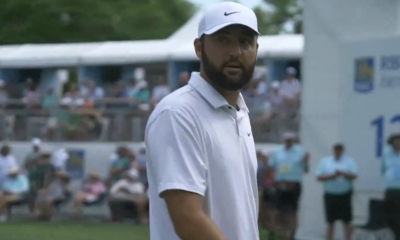
 19th Hole2 weeks ago
19th Hole2 weeks agoJustin Thomas on the equipment choice of Scottie Scheffler that he thinks is ‘weird’
-

 19th Hole2 weeks ago
19th Hole2 weeks ago‘Absolutely crazy’ – Major champ lays into Patrick Cantlay over his decision on final hole of RBC Heritage
-
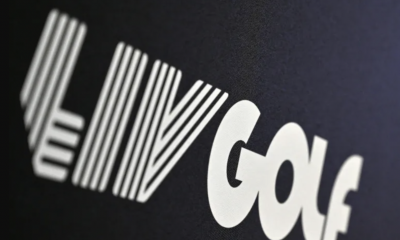
 19th Hole3 weeks ago
19th Hole3 weeks agoReport: LIV Golf identifies latest star name they hope to sign to breakaway tour
-
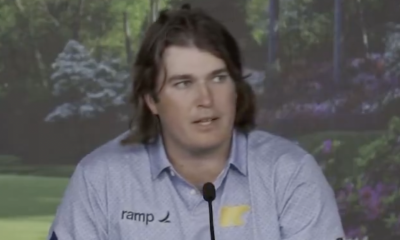
 19th Hole3 weeks ago
19th Hole3 weeks agoNeal Shipley presser ends in awkward fashion after reporter claims Tiger handed him note on 8th fairway
-
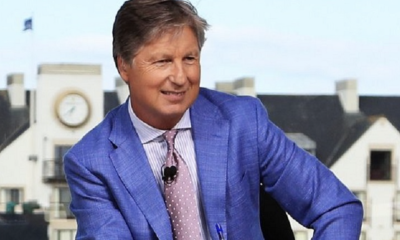
 19th Hole3 weeks ago
19th Hole3 weeks agoBrandel Chamblee has ‘no doubt’ who started the McIlroy/LIV rumor and why
-
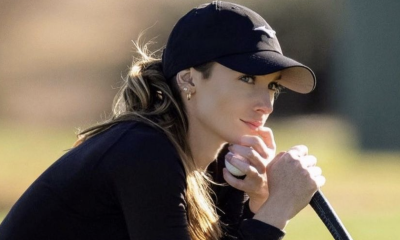
 19th Hole1 week ago
19th Hole1 week agoLET pro gives detailed financial breakdown of first week on tour…and the net result may shock you
-

 Equipment3 weeks ago
Equipment3 weeks agoJason Day on his recent switch into Srixon ZX5 and ZX7 Mk II irons
-
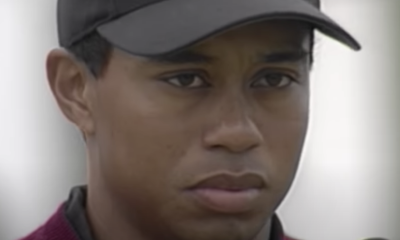
 19th Hole5 days ago
19th Hole5 days agoGary Player claims this is what ‘completely ruined’ Tiger Woods’ career







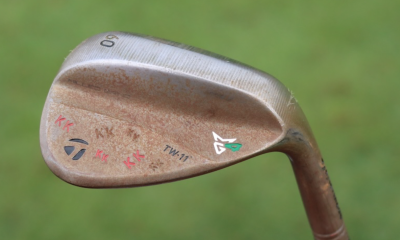














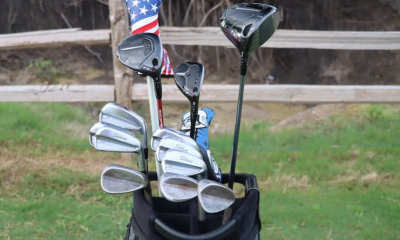

Tom54
Jan 30, 2019 at 5:18 pm
I get the point about power is definitely an advantage over those who do not. I’ve always argued with a buddy of mine that power is not the end all when it comes to advantages. For example,if he pushes a tee ball off line in the same vicinity as mine,his will stay in the rough. Since I’m much longer,mine will be deep in the trees. I just think accuracy should weigh in more when just assuming the power hitter will always have shorter birdie putts.
Tee-Bone
Jan 30, 2019 at 1:27 pm
No mention of Strokes Gained Driving? This is the best metric for what Tour players actually gain or lose from driving.
dlygrisse
Jan 30, 2019 at 12:41 pm
Thank you for validating what I suspected. I’m the 8-9 capper that doesnt hit it long, I putt pretty well and I have a good short game. I keep the ball in play but don’t make a ton of birdies. Buddies of mine look like they might dominate me during a round, but at the end of the day I often have a lower score. My handicap used to be about 3 shots lower before I injured my back, biggest difference is a loss of speed. While I make a lot of pars and bogeys, they make more birdies, about the same amount of pars and a lot more “others”
now if I could just get my bad back in order, I might regain some of my speed…..
Scott
Jan 29, 2019 at 10:53 am
Interesting. I would have thought a +6 would have a higher club head speed than 115. I thought that the average PGA Tour speed was just south of 120.
Richie Hunt
Jan 29, 2019 at 1:41 pm
Avg. Tour club speed is 113.8 mph.
James
Jan 29, 2019 at 9:38 am
Simplest example for this article is Tiger when he debuted on Tour – pounded past most everyone, putted very well, and, well, we all know the rest about 1997-2003 😉
Keith Reynolds
Jan 31, 2019 at 7:29 am
But Tiger’s best shot was the second shot to the green. As Richie indicated, having a shorter putt is a great advantage. The advantage of a longer drive is that you’re using a shorter club for your shot to the green.
St
Jan 29, 2019 at 9:12 am
It just means that golf is a stupid game. You hit the ball as far as you can and try to avoid trouble. If you can do that, the game becomes really silly
JP
Jan 29, 2019 at 12:00 am
I must suck. My club head speed is much higher than my suggested handicap. I’ve got some work to do this year. Haha
Patricknorm
Jan 28, 2019 at 7:47 pm
Another great article Rich. With you being a statistician there’s nothing you say or do that cannot be disputed. That’s why I don’t understand why anyone would “ shank” any of your articles. They are pure analytical gold. I think many people cannot understand the pure logic that statistics bring. Or took the time and energy to read it. Like I said, pure gold.
Richie Hunt
Jan 30, 2019 at 10:43 am
Thanks for the kind words. I will say that with most statistical analysis and research the data is compiled and then there is an interpretation of the data. The interpretation of the data can be more up for debate.
The problem is that most non-statisticians are arguing their own opinion that is based on their own, long held belief system instead of actually debating the interpretation of the data.